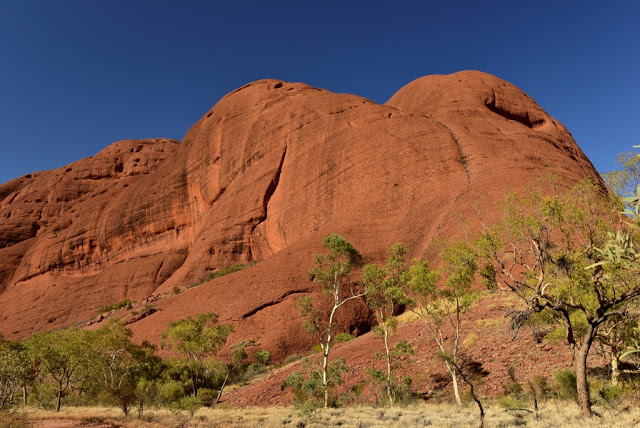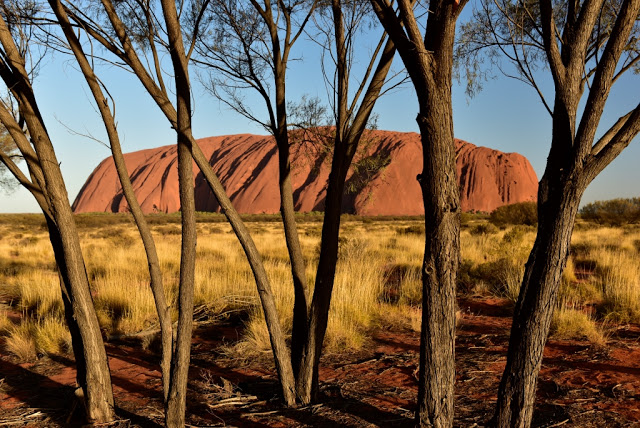
Dan Will Travel
I'm Dan and I WILL Travel
I was on the trail with plenty of water (I thought) and 4 heavy camera lenses before 8 AM. Easy walk to the first view point, and the further trail open/close point.

| First viewpoint, location of the closure sign below. |

| Solar powered, it flashes open or closed. At 8:05 AM it is open, even though it is about 90 already. |
If you are allowed onward, then you go steeply down to a valley (I know I was not going to like this part of my return!) Then steeply up and literally scrambling up over sheer rock to viewpoint number two.
 |
| I am in the valley now, starting the loop |

| The trail up to the second, main viewpoint. |
Second viewpoint achieved. It seems that most hikers turn around here and return, but, heck, the onward trail is just a loop out into the desert and eventually meets the main trail again, so why not?

| Ok, second viewpoint achieved, now down and out into the desert. |
So, down and out I went, not to see shade or hardly another person for hours. Trudging up, trudging down, trudging up, trudging down. And so on. Water bottle one is gone now, but there is still another one. It is about 95 now, after 10 am and this is getting old. (Or maybe it is me getting old?) Anyway, there is no choice but to go on, so the German in me kicked in.
 |
| Rock trail, blazing sun |

| out in the desert |

| It is really blanking hot out here…….. |

 |
| Trudging up the hill out of the loop valley. Stopping every 100′ or so. |
With a number of rest stops I did get back to the closure sign and then had “only” about another mile to trudge back to the car.

| Sort of my first view of the day at Uluru. Iconic for sure. |
 |
| A dead desert Oak framing Uluru. |

| Cave paintings |

| Bright mid day sun, about 100 degrees. |
 |
| It is not all smooth rock. Close up below. |

| it’s hot out here. |

| Initial shot from the sunset area. |
 |
| I liked this contrast. |

| My attempt at the classic sunset shot. |
 |
| The final shot before going back. Flies are getting the best of me. |

| OK, I made the turn OK, and now I go west to Uluru. |
3 Today, returning the 300 miles I overtook 3 cars going my direction. In 300 miles. Maybe about 50 going the other way, but that is one every 6 miles or so.

| 4 full trailers. No, once it gets going it is not going to stop easily. 26 axles, 102 tires. Wow. |
 |
| The road. Taken from a sand dune. |

| A lonely tree |

| The fully equipped rest area, firewood ready, and a request to keep it all “tidy.” |
 |
| Dry lake bed and dunes across from the rest area. |

| There are over 1 million wild camels in Australia. The breed that has evolved in the wild is highly sought after in the middle East so Australia exports them back to where they came from. |

| Hi there. |
















